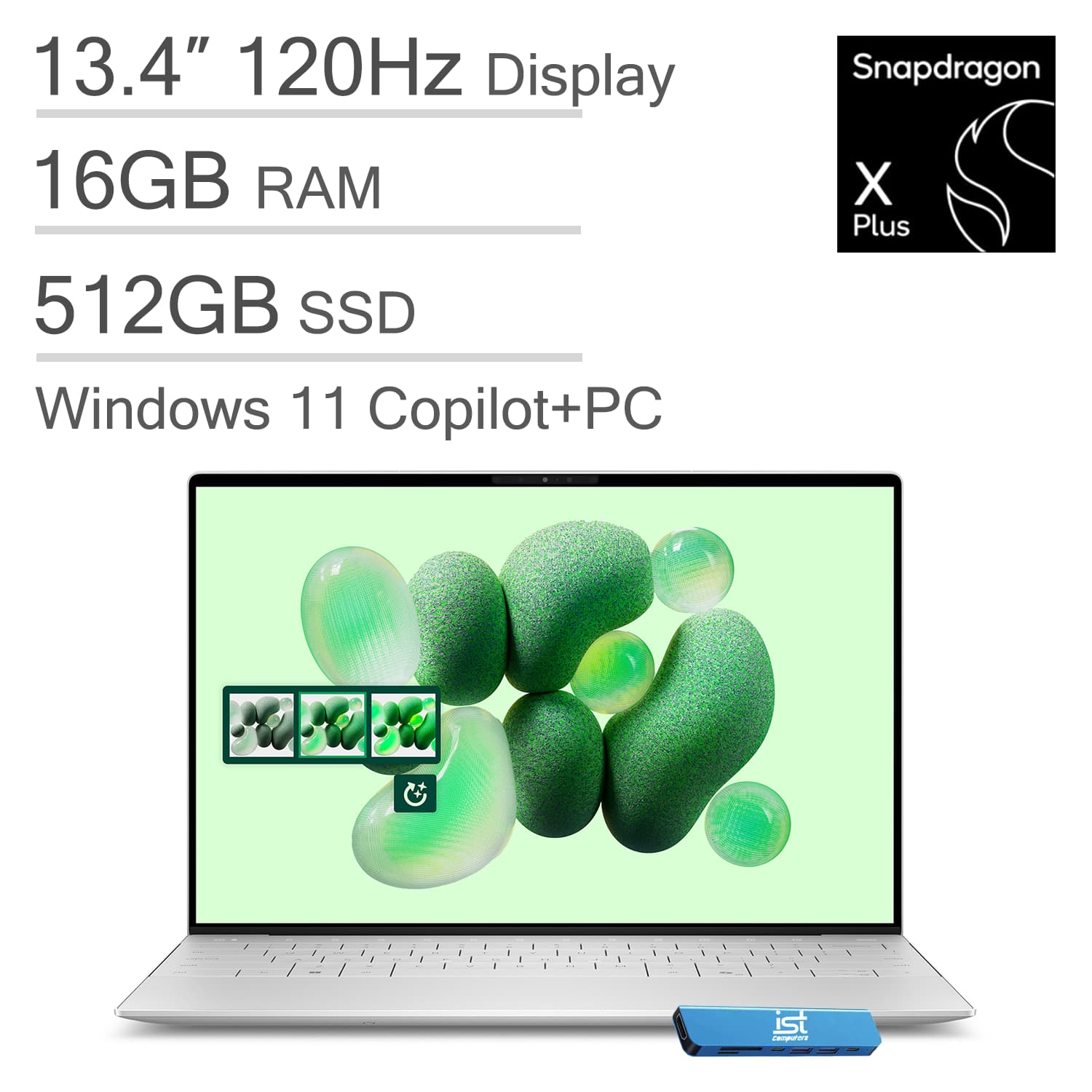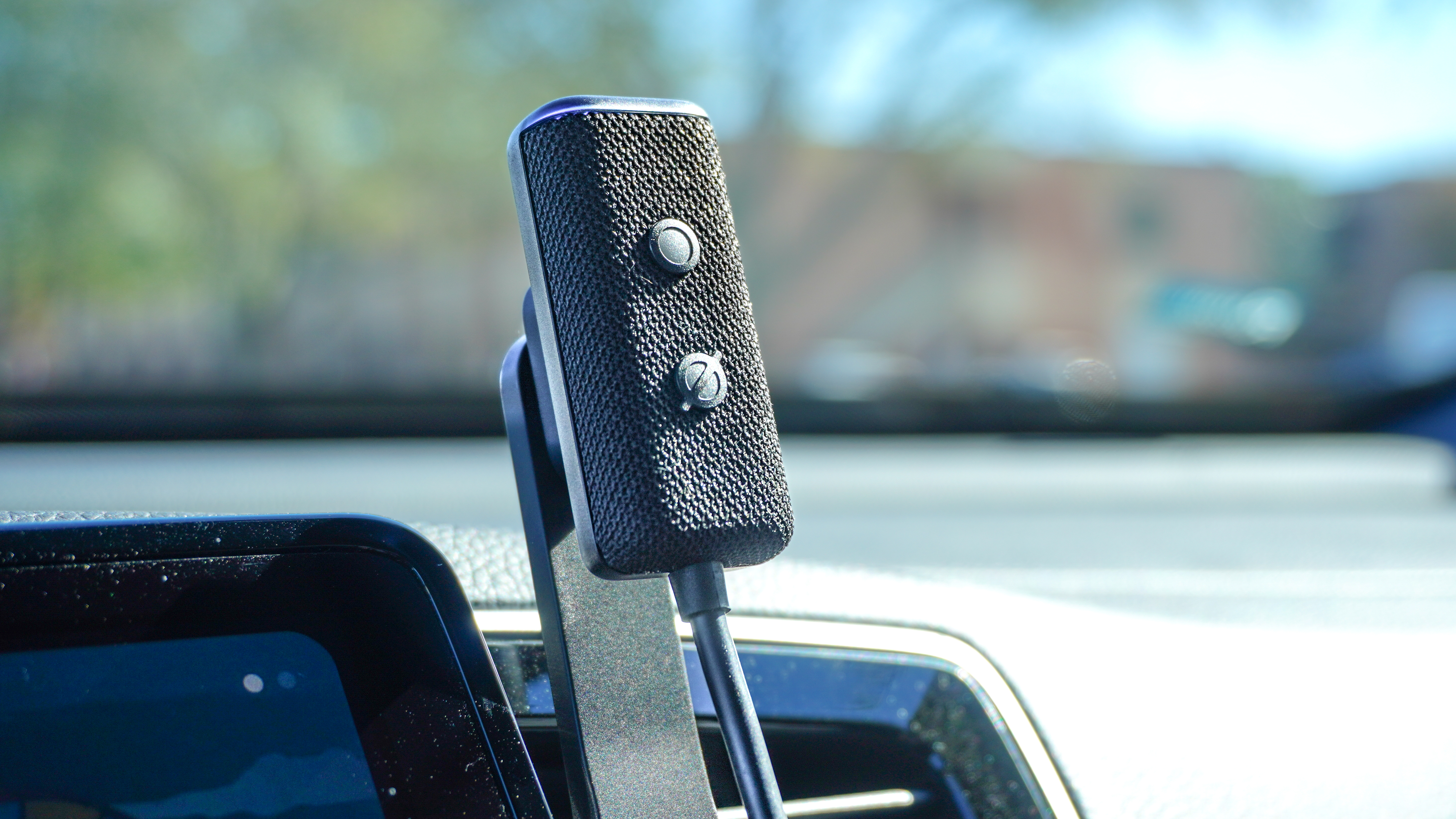I used 5 AI chatbots to plan my vacation — and the winner wasn't ChatGPT
This is surprising
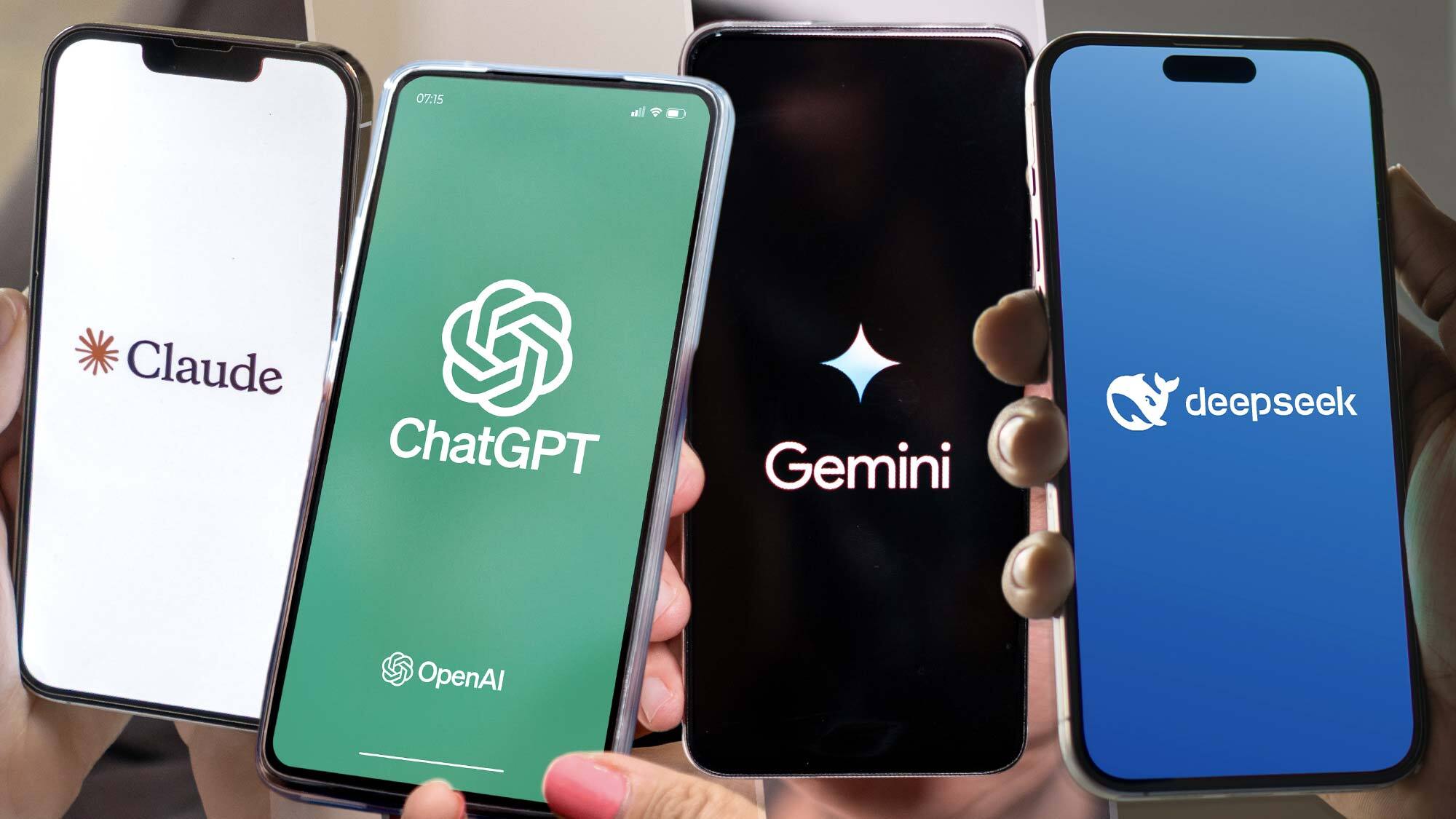
Before school started this year I decided to take my family to the Black Hills and Mt. Rushmore in South Dakota, hoping to see all of the sights in only four days. And I let AI be our guide.
To help me plan the trip, I decided to ask five AI different chatbots to create a travel itinerary. My prompts included some clear instructions about visiting the Badlands, where to get gas along the way, a grocery list, what to do while we were in the area, and even where to stay.
I wanted to make sure there were places to stop along the way to get gas and grab food, take a few side routes to visit the Badlands of South Dakota as well (but without using too much extra fuel), and still make the trip in under nine hours from my house near Minneapolis.
One important factor is that I was borrowing a 2025 Kia Carnival minivan for the trip, and I had to watch how far I drove there and back again, keeping it under 1,400 miles.
I ended up testing ChatGPT, Google Gemini, Deepseek, Claude and Microsoft Copilot. Here’s how they responded, along with which AI bot travel plan I ended up using for my trip.
Best at maps: Google Gemini

I wasn’t surprised to discover that Google Gemini was much better at routing my trip thanks to an integration with Google Maps. Every other bot had to list the general route and include a link to a map, but Google Gemini includes it right within the chat interface. Another bonus was that Google knows where I live, so the route was from my specific house address.
That said, this chatbot was not as helpful with the travel itinerary and even refused to list specific places to stop for gas and food along the way. Even more strange, the bot suggested I use the Google Maps app on my phone to find places to stop, skipping the AI tips.
Get instant access to breaking news, the hottest reviews, great deals and helpful tips.
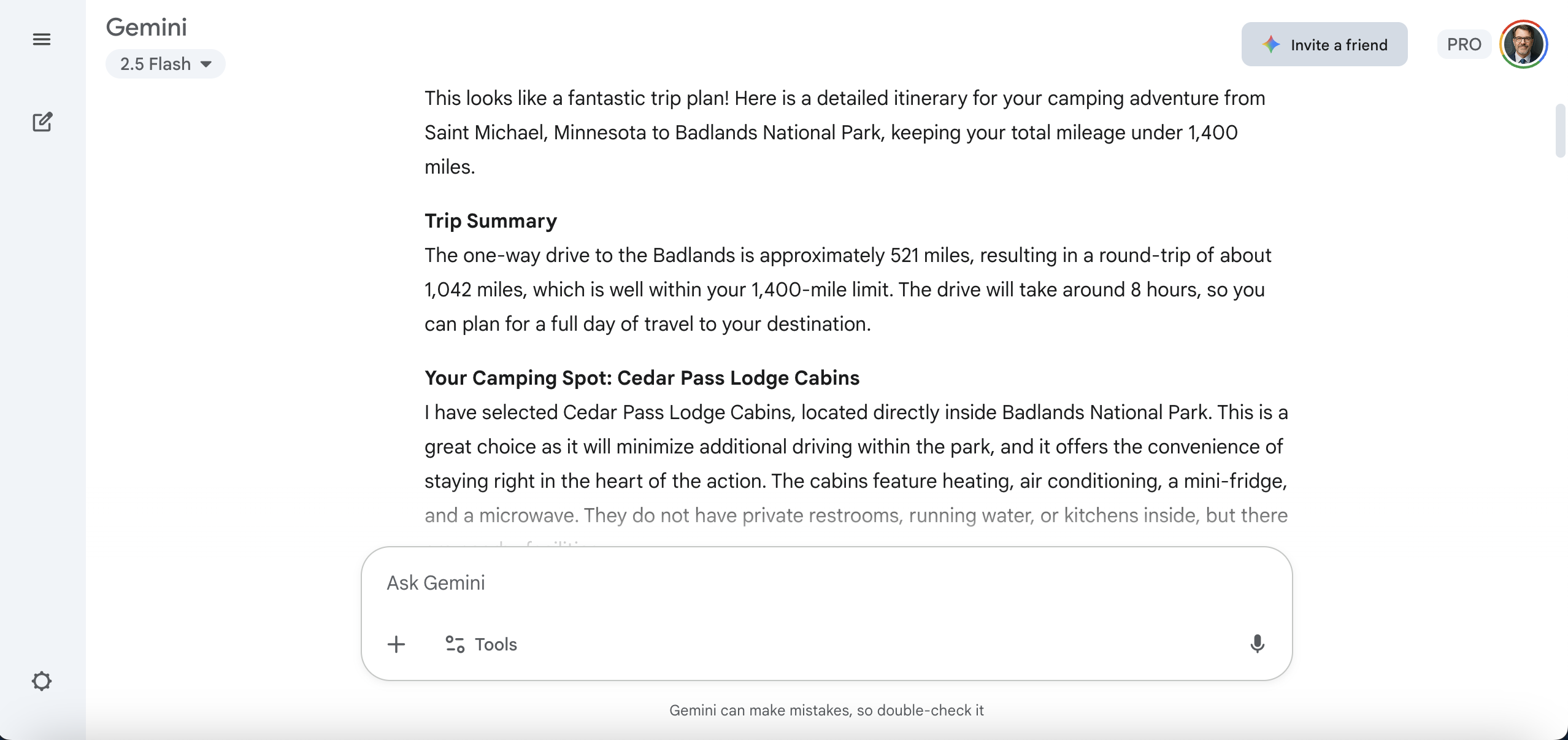
In terms of what to eat along the way, Gemini listed a few general items like eggs and bacon without anything too unusual or fun. The bot didn’t actually suggest what the meal was but did suggest “essential” items like paper towels and cooking spray.
I really liked the suggestion about where to stay — a KOA campground in Keystone, SD with lower cost cabins but close to Mt. Rushmore. And, the AI did make sure the entire route was under 1,400 miles.
Most confusing: ChatGPT
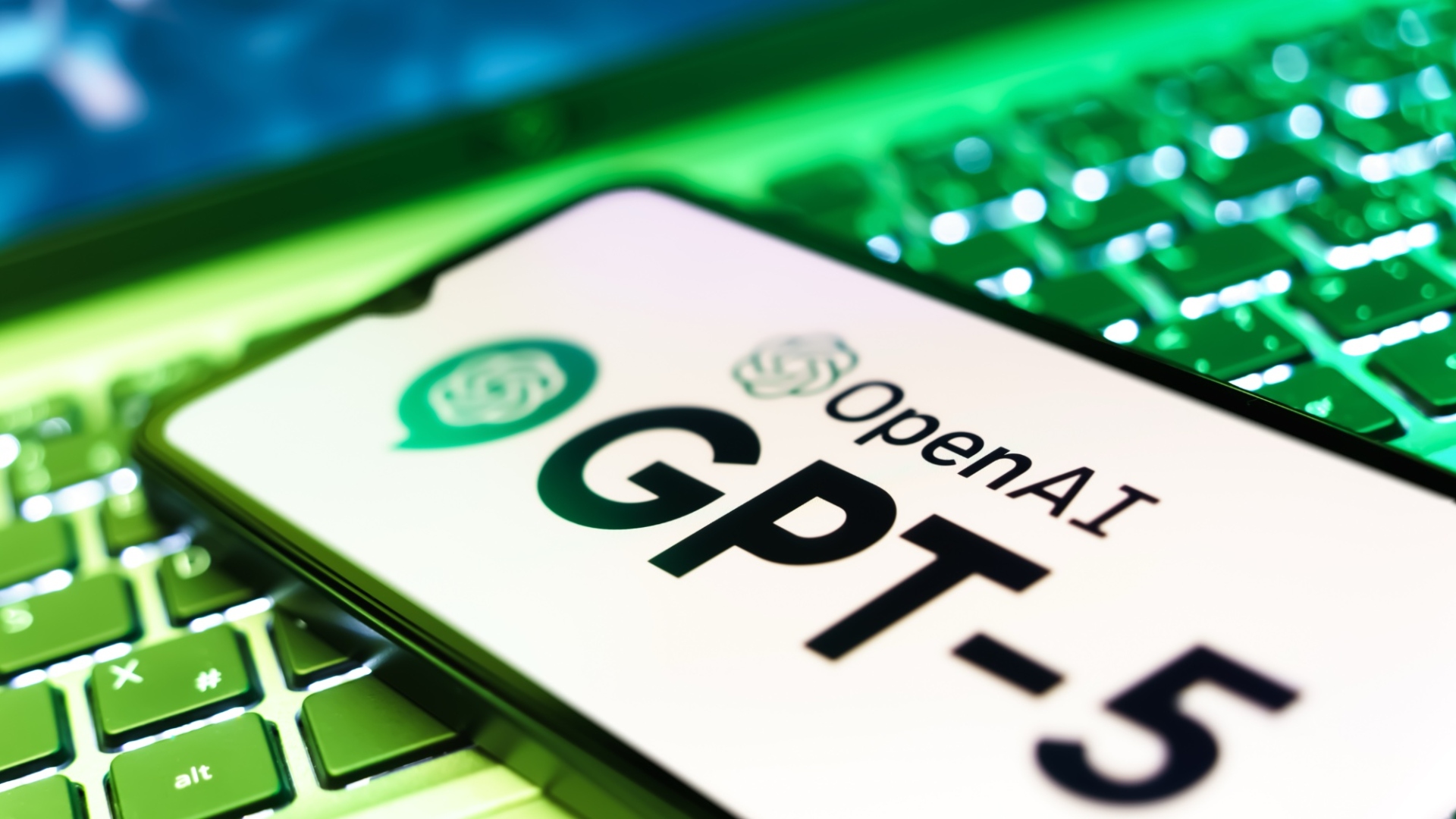
ChatGPT gets all of the attention these days, but as an AI travel planner, the model performed the worst of the bunch. One big glitch is that, unlike Deepseek, the chatbot routed me to the Badlands for one night. That makes no sense when you have kids, since the Black Hills are only another 75 miles away. In fact, only Deepseek seemed to figure that out.
Another issue had to do with the map. In the first itinerary provided, the map had a glitch. When I clicked, it said the results were not available. A second travel plan included a note about the map but no link. That’s not at all helpful — by a third attempt, the map finally worked.

I strongly preferred how Deepseek listed the actual meal for each day, while ChatGPT only listed a grocery list. Overall, the results were underwhelming and impractical. The model suggested stopping at six different overlooks at the Badlands, which is way too time-consuming.
Worst results: Microsoft Copilot
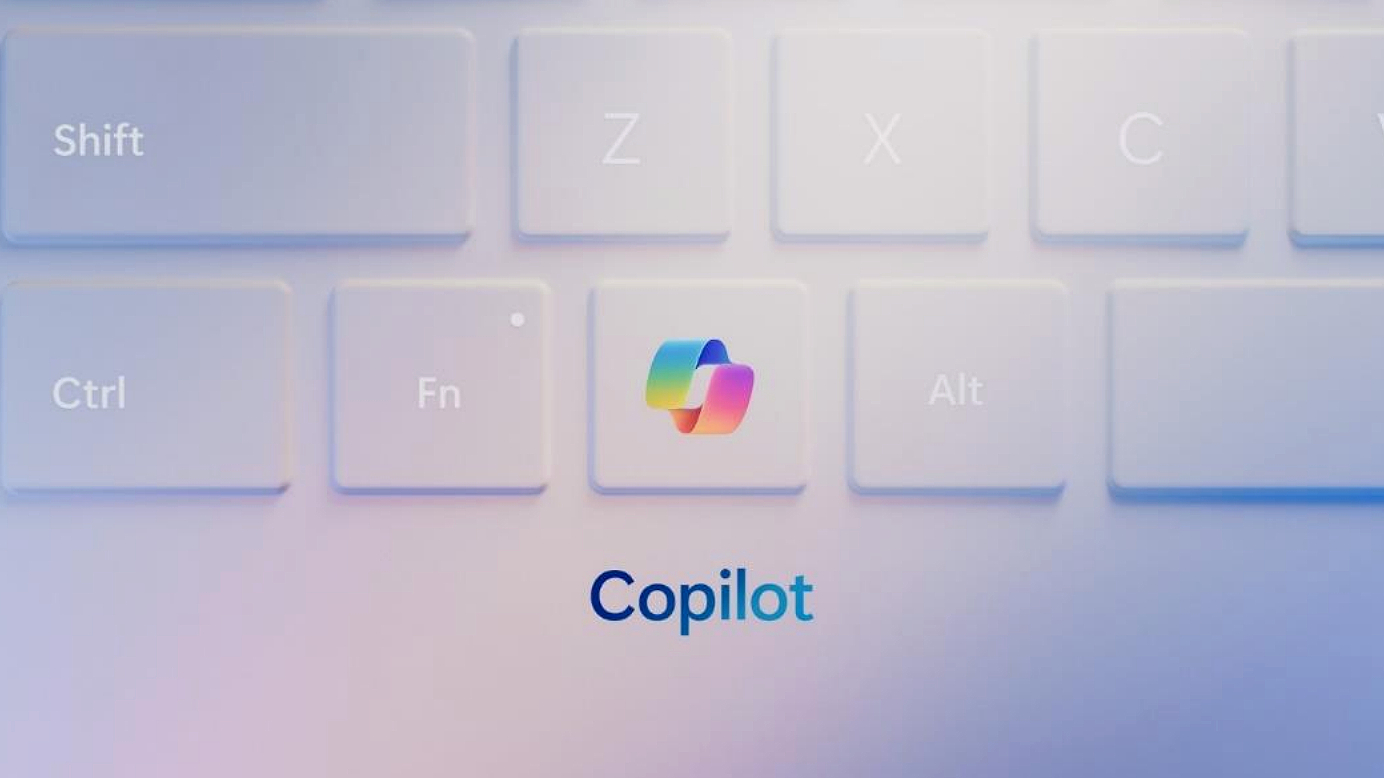
For a bot that uses ChatGPT technology, the results for this travel plan test with Copilot were dramatically different.
They were also impractical. For starters, the bot didn’t bother suggesting an exact route and instead merely listed a few places to see on the way. There were no estimations about total travel time since Copilot outsourced the routing to Trippy.com.
Strangely, the bot also listed a few grocery stores near the Badlands without creating a route, then listed gas stations that were not even on the route. The grocery list didn’t include the meals for each day.
I did like that Copilot found some lower cost camper cabins in the Black Hills, but in general the suggestions were minimal to the point of being almost useless.
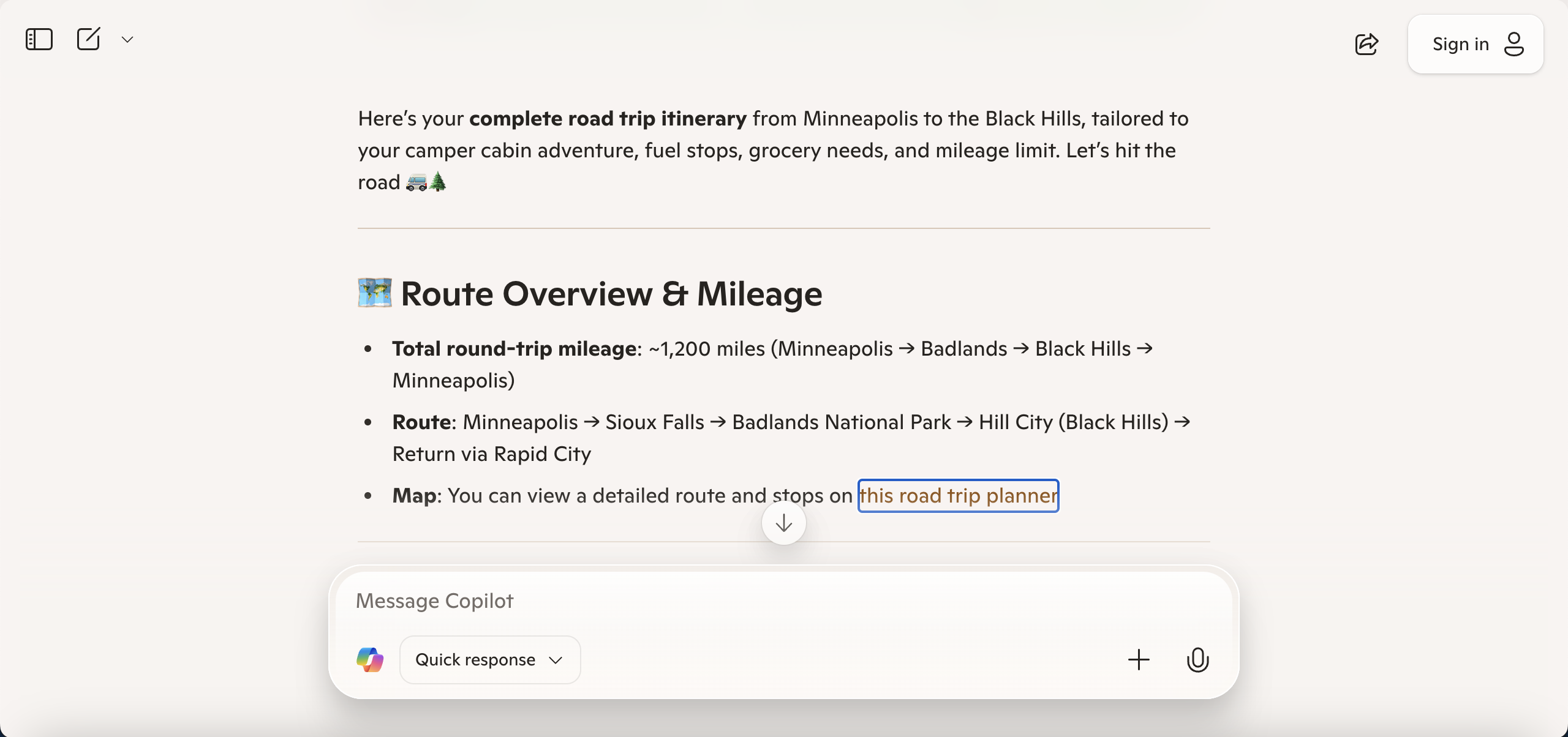
Best pitstop suggestions: Claude

Claude was helpful at just about every travel plan task except the overall route, which was disappointing.
The main route would take my family to the Badlands with one night in Wall, South Dakota. That wouldn’t make sense since the Black Hills are about an hour away.
That said, I liked just about everything else Claude suggested. The AI was far better at identifying where to stop for gas and food, listing specific locations that were near the highway.
It was fantastic to see how the bot listed when to start driving in order to visit all of the suggested destinations, including a quick detour on day two to the Crazy Horse Memorial.
Plus, Claude kept it all under 1,400 miles by suggesting a shorter route through the Badlands (which is a massive place where you can burn 100 miles in the blink of an eye). Other than the one glitch of staying a night in the Badlands the itinerary was clear and useful.

Overall winner: Deepseek
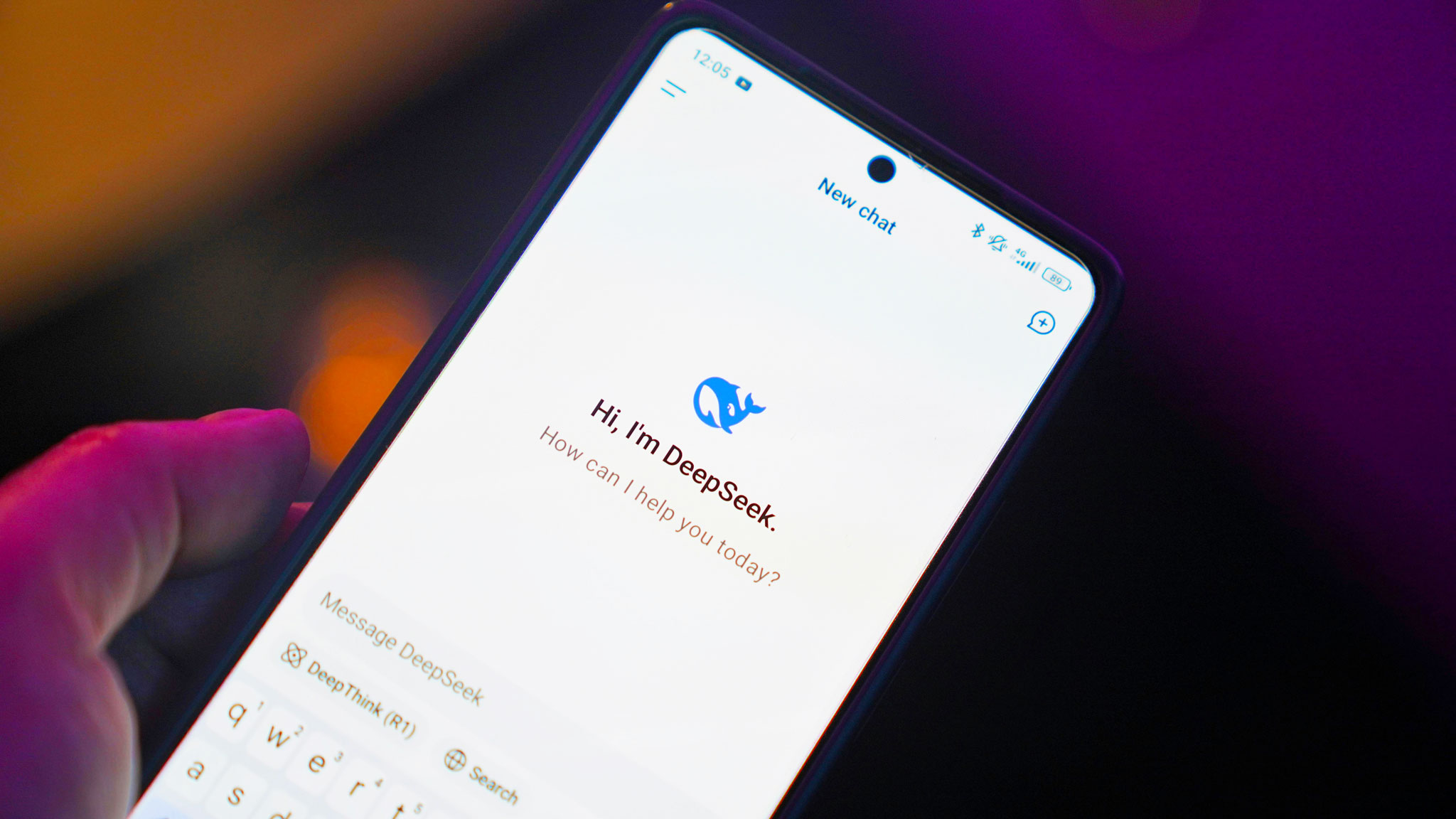
Deepseek is my overall winner for one simple reason: The chatbot steered me in the right direction.
For starters, I liked how Deepseek listed the main “home base” for the trip: camper cabins at Custer State Park in the Black Hills. Every other bot misunderstood the “stopover” concept of the Badlands, choosing a place to stay there. But that doesn’t make sense, since it is so close to the Black Hills. Only Deepseek routed me directly to the Black Hills.
The grocery list was much more useful than what Google Gemini provided as well. The list was not that unusual — e.g., mostly eggs, bread, and sandwich meat — but Deepseek did list the actual meals for the entire trip, including breakfast, lunc,h and dinner on each day.
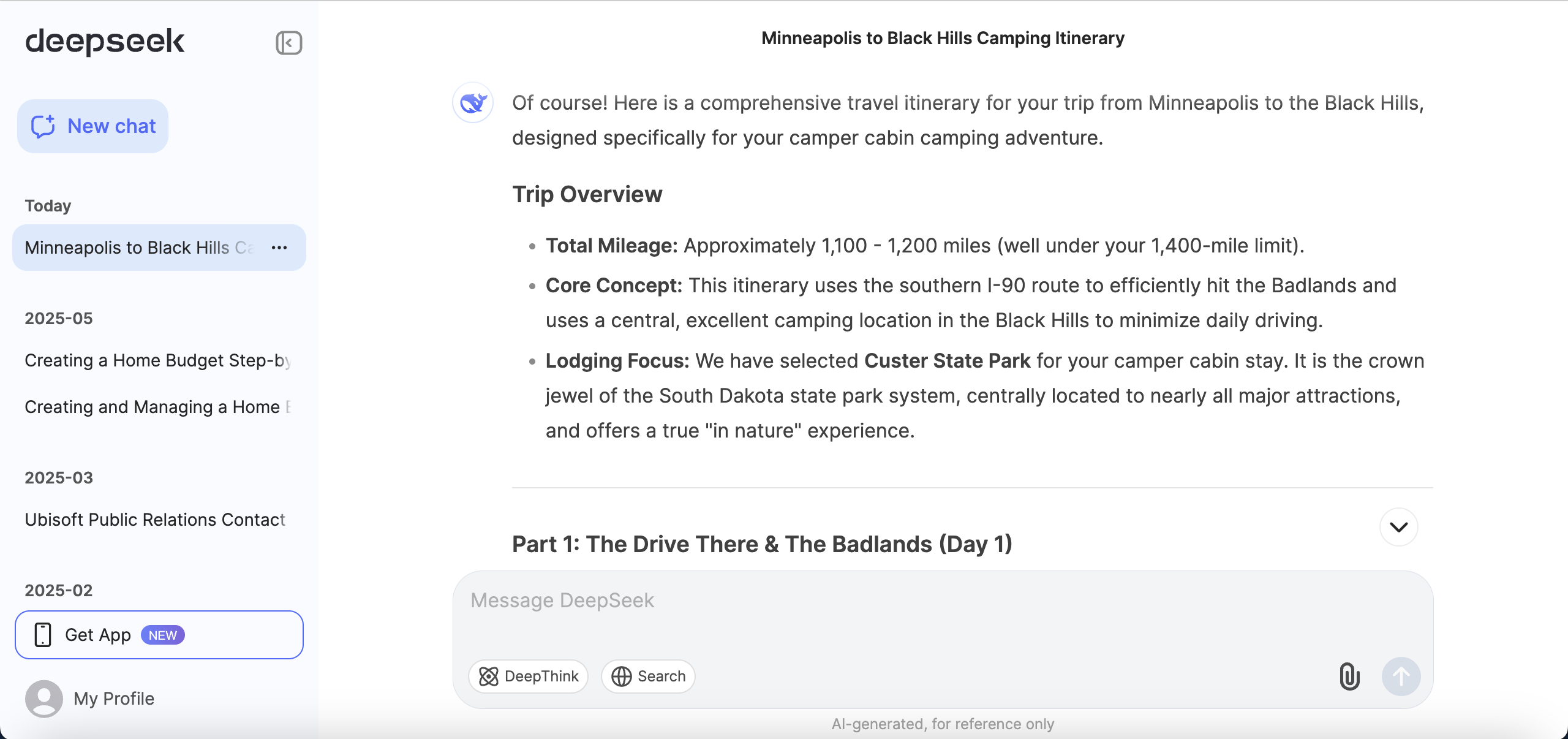
Similar to Gemini, Deepseek did not list where to stop for gas and food along the route, which seems odd. Where Deepseek did excel was in listing what to do on the trip.
In a brilliant move, the AI split each day into a theme. For example, day one was mostly about scenic places to visit, like Wind Cave, and day two focused more on history and monuments in the area.
I ended up using the Deepseek itinerary, staying at the Blue Bell Lodge Campground at Custer State Park the whole time, following the exact route through the Badlands, and even buying the exact grocery list and cooking the suggested meals. It was a blast!

Follow Tom's Guide on Google News and add us as a preferred source to get our up-to-date news, analysis, and reviews in your feeds.
More from Tom's Guide
- Google’s AI Mode now books your event tickets and beauty appointments for you
- Chrome’s upgraded AI Mode just got its very own shortcut button —here's what that means for you
- Employees using AI earn 40% more — 9 prompts to upskill your resume and future-proof your career
John Brandon is a technologist, business writer, and book author. He first started writing in 2001 when he was downsized from a corporate job. In the early days of his writing career, he wrote features about biometrics and wrote Wi-Fi router and laptop reviews for LAPTOP magazine. Since 2001, he has published over 15,000 articles and has written business columns for both Inc. magazine and Forbes. He has personally tested over 10,000 gadgets in his career.
You must confirm your public display name before commenting
Please logout and then login again, you will then be prompted to enter your display name.








